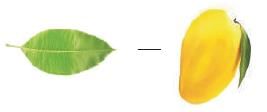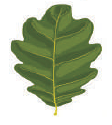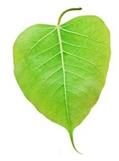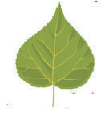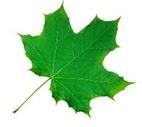All Exams >
Grade 1 >
Science & Technology for Grade 1 >
All Questions
All questions of Plants through the Seasons for Grade 1 Exam
Palm tree does not have:- a)Branches
- b)Seeds
- c)Leaves
- d)Flowers
Correct answer is option 'D'. Can you explain this answer?
Palm tree does not have:
a)
Branches
b)
Seeds
c)
Leaves
d)
Flowers
|
|
Om Ghoshal answered |
Palm tree does not have:
Palm trees do have branches, although they differ from the branches of most other trees. The branches of a palm tree are not woody and spread horizontally from the top of the trunk. They are called fronds and are made up of leaflets attached to a central stem. The fronds of a palm tree are elongated and fan-shaped, providing the tree with its characteristic tropical appearance.
Palm trees do have seeds. In fact, palm trees are known for their unique seed structures. Palm tree seeds are typically contained within fruit or nuts. These seeds vary in size and shape, depending on the species of palm tree. Some palm tree seeds are small and round, while others are larger and elongated. Palm tree seeds are often used for propagation, allowing new palm trees to be grown from these seeds.
Palm trees do have leaves, although their leaves are called fronds. Palm tree fronds are elongated and fan-shaped, providing the tree with its characteristic tropical appearance. The fronds of a palm tree are made up of leaflets attached to a central stem. The leaflets are often long and narrow, giving the fronds a feathery appearance. Palm tree fronds are usually green, but some species have fronds with silvery or bluish tones.
The correct answer is option 'D' - Palm trees do not have flowers. Unlike many other types of trees, palm trees do not produce showy flowers. Instead, palm trees reproduce through a process called pollination. They have separate male and female flowers, which are small and often inconspicuous. The male flowers produce pollen, which is carried by wind or insects to the female flowers for fertilization. After fertilization, the female flowers develop into fruits or nuts that contain the palm tree seeds. While palm tree flowers may not be as visually striking as those of other trees, they play a crucial role in the reproductive cycle of the palm tree.
Branches
Palm trees do have branches, although they differ from the branches of most other trees. The branches of a palm tree are not woody and spread horizontally from the top of the trunk. They are called fronds and are made up of leaflets attached to a central stem. The fronds of a palm tree are elongated and fan-shaped, providing the tree with its characteristic tropical appearance.
Seeds
Palm trees do have seeds. In fact, palm trees are known for their unique seed structures. Palm tree seeds are typically contained within fruit or nuts. These seeds vary in size and shape, depending on the species of palm tree. Some palm tree seeds are small and round, while others are larger and elongated. Palm tree seeds are often used for propagation, allowing new palm trees to be grown from these seeds.
Leaves
Palm trees do have leaves, although their leaves are called fronds. Palm tree fronds are elongated and fan-shaped, providing the tree with its characteristic tropical appearance. The fronds of a palm tree are made up of leaflets attached to a central stem. The leaflets are often long and narrow, giving the fronds a feathery appearance. Palm tree fronds are usually green, but some species have fronds with silvery or bluish tones.
Flowers
The correct answer is option 'D' - Palm trees do not have flowers. Unlike many other types of trees, palm trees do not produce showy flowers. Instead, palm trees reproduce through a process called pollination. They have separate male and female flowers, which are small and often inconspicuous. The male flowers produce pollen, which is carried by wind or insects to the female flowers for fertilization. After fertilization, the female flowers develop into fruits or nuts that contain the palm tree seeds. While palm tree flowers may not be as visually striking as those of other trees, they play a crucial role in the reproductive cycle of the palm tree.
Which of the following is obtained from the same type of plant from which a pumpkin is obtained?- a)
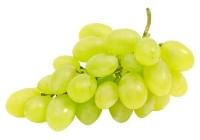
- b)
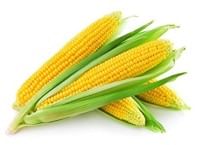
- c)
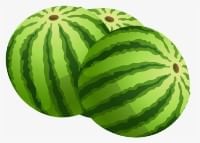
- d)
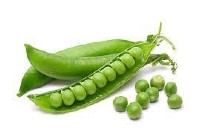
Correct answer is option 'C'. Can you explain this answer?
Which of the following is obtained from the same type of plant from which a pumpkin is obtained?
a)

b)

c)

d)

|
|
Aleena Quadir answered |
C water melon is the correct answer
Select the plant pair which contains plants of different types.- a)Pumpkin, Watermelon
- b)Money plant, Pea
- c)Rose, Grapevine
- d)Mint, Spinach
Correct answer is option 'C'. Can you explain this answer?
Select the plant pair which contains plants of different types.
a)
Pumpkin, Watermelon
b)
Money plant, Pea
c)
Rose, Grapevine
d)
Mint, Spinach
|
|
Pranav Singh answered |
Rose is a shrub and grapevine is a climber.
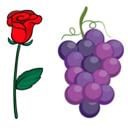

Which of these is not a shrub?
- a)Mehndi Plant
- b)Marigold Plant
- c)Tea Plant
- d)Coconut Plant
Correct answer is option 'D'. Can you explain this answer?
Which of these is not a shrub?
a)
Mehndi Plant
b)
Marigold Plant
c)
Tea Plant
d)
Coconut Plant
|
|
Arindam Jain answered |
Explanation:
The correct answer is option 'D' - Marigold Plant.
Shrub:
A shrub is a small to medium-sized woody plant that has multiple stems and is usually shorter than a tree. Shrubs are characterized by their bushy appearance and their ability to branch out from the base. They are often used for landscaping purposes, providing structure and color to gardens.
Mehndi Plant:
The Mehndi plant, also known as Lawsonia inermis, is a shrub that belongs to the Lythraceae family. It is native to tropical and subtropical regions and is widely cultivated for its leaves, which are used to create henna paste for body art and hair dye.
Coconut Plant:
The coconut plant, also known as Cocos nucifera, is a large palm tree that belongs to the Arecaceae family. It is not a shrub but a tree. It is found in tropical regions and is cultivated for its fruits, which are known as coconuts. The coconut palm can grow up to 30 meters in height and is commonly found on coastal areas.
Tea Plant:
The tea plant, also known as Camellia sinensis, is an evergreen shrub that belongs to the Theaceae family. It is native to East Asia and is widely cultivated for its leaves, which are used to produce tea. The tea plant can grow up to 3 meters in height and has small white flowers.
Marigold Plant:
Marigold plants, also known as Tagetes, are flowering plants that belong to the Asteraceae family. They are herbaceous annuals or perennials but not shrubs. Marigolds are known for their bright yellow, orange, and red flowers, and are often used as decorative plants in gardens and landscapes. They are native to the Americas and have been cultivated for centuries for their ornamental and medicinal properties.
In conclusion, out of the given options, the Marigold plant is not a shrub. It is a herbaceous annual or perennial plant.
Which of these plant fruit gives fibre from which clothes are made?- a)Cotton
- b)Jasmine
- c)Rose
- d)China Rose
Correct answer is option 'A'. Can you explain this answer?
Which of these plant fruit gives fibre from which clothes are made?
a)
Cotton
b)
Jasmine
c)
Rose
d)
China Rose
|
|
Tanishq Gupta answered |
Cotton is the plant that gives fiber from which clothes are made.
Explanation:
Cotton is a type of plant that belongs to the family Malvaceae and is native to tropical and subtropical regions around the world. It is known for its soft, fluffy fibers that grow around the seeds of the cotton plant. These fibers are the primary source of natural fiber used in the production of clothing and textiles.
Cotton fiber is obtained from the bolls of the cotton plant. The bolls are the fruit of the cotton plant, which contain the seeds and the fibers. The fibers are composed of cellulose, a complex carbohydrate that provides strength and flexibility to the cotton fibers. These fibers are arranged in a twisted, ribbon-like structure, which gives cotton its characteristic softness and breathability.
Cotton is harvested by picking the bolls from the cotton plant when they are fully mature. The bolls are then processed to remove the seeds and separate the fibers. This process involves several steps, including ginning, carding, and spinning, which help to clean, align, and twist the fibers into yarn.
Once the cotton fibers are spun into yarn, they can be further processed and woven or knitted into fabrics. Cotton fabrics are highly versatile and can be used to make a wide range of clothing items, including t-shirts, jeans, dresses, and more. Cotton is valued for its softness, comfort, and breathability, making it a popular choice for clothing in both warm and cool climates.
In conclusion, cotton is the plant that gives fiber from which clothes are made. Its soft, fluffy fibers are harvested from the bolls of the cotton plant and processed into yarn, which is then woven or knitted into fabrics for clothing production.
Explanation:
Cotton is a type of plant that belongs to the family Malvaceae and is native to tropical and subtropical regions around the world. It is known for its soft, fluffy fibers that grow around the seeds of the cotton plant. These fibers are the primary source of natural fiber used in the production of clothing and textiles.
Cotton fiber is obtained from the bolls of the cotton plant. The bolls are the fruit of the cotton plant, which contain the seeds and the fibers. The fibers are composed of cellulose, a complex carbohydrate that provides strength and flexibility to the cotton fibers. These fibers are arranged in a twisted, ribbon-like structure, which gives cotton its characteristic softness and breathability.
Cotton is harvested by picking the bolls from the cotton plant when they are fully mature. The bolls are then processed to remove the seeds and separate the fibers. This process involves several steps, including ginning, carding, and spinning, which help to clean, align, and twist the fibers into yarn.
Once the cotton fibers are spun into yarn, they can be further processed and woven or knitted into fabrics. Cotton fabrics are highly versatile and can be used to make a wide range of clothing items, including t-shirts, jeans, dresses, and more. Cotton is valued for its softness, comfort, and breathability, making it a popular choice for clothing in both warm and cool climates.
In conclusion, cotton is the plant that gives fiber from which clothes are made. Its soft, fluffy fibers are harvested from the bolls of the cotton plant and processed into yarn, which is then woven or knitted into fabrics for clothing production.
Which of the following is a characteristic of trees?- a)They have soft stems.
- b)They usually live for a few months.
- c)They have a thick, hard stem called a trunk.
- d)They require support to grow.
Correct answer is option 'C'. Can you explain this answer?
a)
They have soft stems.
b)
They usually live for a few months.
c)
They have a thick, hard stem called a trunk.
d)
They require support to grow.
|
|
Stoneridge Institute answered |
Trees are characterized by their tall stature and have a thick, hard stem called a trunk, which provides support and structure to the plant.
Why is it important to protect wild animals and their habitats?- a)To cut down trees for human use.
- b)To exploit wild animals for commercial purposes.
- c)To preserve biodiversity and maintain ecological balance.
- d)To domesticate wild animals as pets.
Correct answer is option 'C'. Can you explain this answer?
a)
To cut down trees for human use.
b)
To exploit wild animals for commercial purposes.
c)
To preserve biodiversity and maintain ecological balance.
d)
To domesticate wild animals as pets.
|
|
Stoneridge Institute answered |
Protecting wild animals and their habitats is essential to preserve biodiversity and maintain the ecological balance of ecosystems.
What should be provided to pet animals for their well-being?- a)Proper nutrition, shelter, and veterinary care
- b)Regular exercise and training
- c)A spacious living environment
- d)Interaction with other animals
Correct answer is option 'A'. Can you explain this answer?
a)
Proper nutrition, shelter, and veterinary care
b)
Regular exercise and training
c)
A spacious living environment
d)
Interaction with other animals
|
|
Stoneridge Institute answered |
Pet animals should be provided with proper nutrition, shelter, and veterinary care to ensure their well-being and health
What is the purpose of classifying plants based on their growth habits?- a)To identify which plants produce flowers.
- b)To understand the different environments where plants grow.
- c)To determine the lifespan and physical characteristics of plants.
- d)To learn about the nutritional value of different types of plants.
Correct answer is option 'C'. Can you explain this answer?
a)
To identify which plants produce flowers.
b)
To understand the different environments where plants grow.
c)
To determine the lifespan and physical characteristics of plants.
d)
To learn about the nutritional value of different types of plants.
|
|
Stoneridge Institute answered |
Classifying plants based on their growth habits helps us understand their lifespan, physical characteristics such as height and stem thickness, and the type of growth they undergo.
What do animals like elephants and monkeys do in the forest?- a)They build nests on trees.
- b)They rest under the shade of trees.
- c)They live in caves.
- d)They burrow underground.
Correct answer is option 'B'. Can you explain this answer?
a)
They build nests on trees.
b)
They rest under the shade of trees.
c)
They live in caves.
d)
They burrow underground.
|
|
Stoneridge Institute answered |
Animals like elephants and monkeys rest under the shade of trees in the forest.
Which of the following plant stems are edible?- a)Sugarcane
- b)Ginger
- c)Onion
- d)All of these
Correct answer is option 'D'. Can you explain this answer?
Which of the following plant stems are edible?
a)
Sugarcane
b)
Ginger
c)
Onion
d)
All of these
|
|
Bhoomika rao answered |
Edible Plant Stems
Plant stems are an essential part of the plant anatomy that provides support and transportation of water, nutrients, and sugars. While many plant stems are not typically consumed, there are several edible plant stems that are commonly used in cooking and have various culinary applications. In this case, all of the options provided - sugarcane, ginger, and onion - have edible stems.
Sugarcane (a) is a tall perennial grass that is primarily cultivated for its sweet juice, which is extracted from its stalks. The stems of sugarcane are thick and fibrous, containing a high concentration of sucrose. Sugarcane is extensively grown in tropical and subtropical regions, and its juice is commonly used to produce sugar, molasses, and various sugarcane-based products. The stalks of sugarcane can also be chewed directly to extract the sweet juice, providing a refreshing treat.
Ginger (b) is a flowering plant that is widely used as a spice and natural remedy in various cuisines and traditional medicine. The part of ginger that is commonly used is its rhizome, which is an underground stem. However, the above-ground stem of ginger, known as the "pseudostem," is also edible. Although it is less commonly consumed compared to the rhizome, the pseudostem of ginger can be used in cooking to add a mild ginger flavor. It is often sliced or grated and used in stir-fries, soups, or as an aromatic ingredient in various dishes.
Onion (c) is a widely cultivated vegetable known for its strong flavor and culinary versatility. While the edible part of an onion is its bulb, which grows underground, the above-ground stem of an onion is also edible. The stem of an onion is commonly referred to as the "green onion" or "scallion." It has a milder taste compared to the bulb and is often used as a garnish or ingredient in salads, stir-fries, soups, and other dishes. Green onions can be harvested young when the stem is tender and green, or they can be left to mature, forming a bulb-like structure at the base.
In conclusion, all of the options provided - sugarcane, ginger, and onion - have edible stems. Sugarcane stalks are rich in sucrose and are primarily used to produce sugar and sugarcane-based products. Ginger's above-ground stem, known as the pseudostem, can be used in cooking to add a mild ginger flavor. Onion stems, also called green onions or scallions, have a milder taste compared to the bulb and are commonly used as a garnish or ingredient in various dishes.
Introduction
Plant stems are an essential part of the plant anatomy that provides support and transportation of water, nutrients, and sugars. While many plant stems are not typically consumed, there are several edible plant stems that are commonly used in cooking and have various culinary applications. In this case, all of the options provided - sugarcane, ginger, and onion - have edible stems.
1. Sugarcane
Sugarcane (a) is a tall perennial grass that is primarily cultivated for its sweet juice, which is extracted from its stalks. The stems of sugarcane are thick and fibrous, containing a high concentration of sucrose. Sugarcane is extensively grown in tropical and subtropical regions, and its juice is commonly used to produce sugar, molasses, and various sugarcane-based products. The stalks of sugarcane can also be chewed directly to extract the sweet juice, providing a refreshing treat.
2. Ginger
Ginger (b) is a flowering plant that is widely used as a spice and natural remedy in various cuisines and traditional medicine. The part of ginger that is commonly used is its rhizome, which is an underground stem. However, the above-ground stem of ginger, known as the "pseudostem," is also edible. Although it is less commonly consumed compared to the rhizome, the pseudostem of ginger can be used in cooking to add a mild ginger flavor. It is often sliced or grated and used in stir-fries, soups, or as an aromatic ingredient in various dishes.
3. Onion
Onion (c) is a widely cultivated vegetable known for its strong flavor and culinary versatility. While the edible part of an onion is its bulb, which grows underground, the above-ground stem of an onion is also edible. The stem of an onion is commonly referred to as the "green onion" or "scallion." It has a milder taste compared to the bulb and is often used as a garnish or ingredient in salads, stir-fries, soups, and other dishes. Green onions can be harvested young when the stem is tender and green, or they can be left to mature, forming a bulb-like structure at the base.
Conclusion
In conclusion, all of the options provided - sugarcane, ginger, and onion - have edible stems. Sugarcane stalks are rich in sucrose and are primarily used to produce sugar and sugarcane-based products. Ginger's above-ground stem, known as the pseudostem, can be used in cooking to add a mild ginger flavor. Onion stems, also called green onions or scallions, have a milder taste compared to the bulb and are commonly used as a garnish or ingredient in various dishes.
I am a fast growing plant and can grow almost 1 mm in a day? Who am I?- a)Rose
- b)Cactus
- c)Money plant
- d)Bamboo
Correct answer is option 'D'. Can you explain this answer?
I am a fast growing plant and can grow almost 1 mm in a day? Who am I?
a)
Rose
b)
Cactus
c)
Money plant
d)
Bamboo
|
|
Amit Khanna answered |
Bamboo is a fast growing plant and can grow almost 1 mm in a day.
The seeds of the maize plants are called- a)Pulses
- b)Spices
- c)Beverages
- d)Cereals
Correct answer is option 'D'. Can you explain this answer?
The seeds of the maize plants are called
a)
Pulses
b)
Spices
c)
Beverages
d)
Cereals
|
|
Amit Khanna answered |
Seeds of the maize plants are called cereals.
Which of the following seeds can be eaten as fruits?- a)
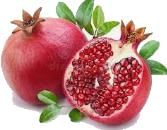
Pomegranate - b)
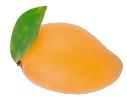
Mango - c)
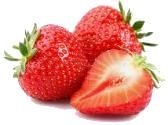
Strawberry - d)
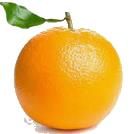
Orange
Correct answer is option 'A'. Can you explain this answer?
Which of the following seeds can be eaten as fruits?
a)

Pomegranate
b)

Mango
c)

Strawberry
d)

Orange
|
|
Manish Kapoor answered |
Pomegranate is a fruit which have edible seeds.
Which type of plant typically lives only for a few months?- a)Trees
- b)Shrubs
- c)Herbs
- d)Climbers
Correct answer is option 'C'. Can you explain this answer?
a)
Trees
b)
Shrubs
c)
Herbs
d)
Climbers
|
|
Stoneridge Institute answered |
Herbs are small plants with soft stems that usually live for only a few months.
What is the living place of a lion known as?- a)Den
- b)Nest
- c)Cave
- d)Burrow
Correct answer is option 'A'. Can you explain this answer?
a)
Den
b)
Nest
c)
Cave
d)
Burrow
|
|
Stoneridge Institute answered |
Lions live in dens, which serve as their shelter and resting place.
What is the role of hyenas, jackals, and vultures in the ecosystem?- a)They hunt other animals.
- b)They primarily eat plants.
- c)They eat the remains of dead animals, keeping the environment clean.
- d)They eat insects and small mammals.
Correct answer is option 'C'. Can you explain this answer?
a)
They hunt other animals.
b)
They primarily eat plants.
c)
They eat the remains of dead animals, keeping the environment clean.
d)
They eat insects and small mammals.
|
|
Arjun Sharma answered |
Role of Hyenas, Jackals, and Vultures in the Ecosystem
Hyenas, jackals, and vultures play a crucial role in maintaining the balance of the ecosystem by primarily feeding on the remains of dead animals. This scavenging behavior has several important implications for the environment and other organisms.
Hyenas:
- Hyenas are known to scavenge on carcasses left behind by other predators or animals that have died naturally.
- By consuming the remains of dead animals, hyenas help in recycling nutrients back into the ecosystem.
- They also help in preventing the spread of diseases by consuming carrion before it has a chance to decompose and release harmful pathogens.
Jackals:
- Jackals are opportunistic feeders that also scavenge on the remains of dead animals.
- They play a role in cleaning up the environment by removing carcasses that could otherwise attract disease-spreading pests.
- Jackals help in maintaining the health of the ecosystem by preventing the buildup of decaying organic matter.
Vultures:
- Vultures are specialized scavengers that have highly acidic stomachs capable of digesting pathogens present in carrion.
- They are often the first to locate and feed on carcasses, preventing the spread of disease in the environment.
- Vultures contribute to the efficient decomposition of dead animals, which helps in nutrient recycling and maintaining ecosystem health.
In conclusion, hyenas, jackals, and vultures play a critical role in the ecosystem by consuming the remains of dead animals. Their scavenging behavior helps in nutrient recycling, disease prevention, and overall environmental cleanliness.
Hyenas, jackals, and vultures play a crucial role in maintaining the balance of the ecosystem by primarily feeding on the remains of dead animals. This scavenging behavior has several important implications for the environment and other organisms.
Hyenas:
- Hyenas are known to scavenge on carcasses left behind by other predators or animals that have died naturally.
- By consuming the remains of dead animals, hyenas help in recycling nutrients back into the ecosystem.
- They also help in preventing the spread of diseases by consuming carrion before it has a chance to decompose and release harmful pathogens.
Jackals:
- Jackals are opportunistic feeders that also scavenge on the remains of dead animals.
- They play a role in cleaning up the environment by removing carcasses that could otherwise attract disease-spreading pests.
- Jackals help in maintaining the health of the ecosystem by preventing the buildup of decaying organic matter.
Vultures:
- Vultures are specialized scavengers that have highly acidic stomachs capable of digesting pathogens present in carrion.
- They are often the first to locate and feed on carcasses, preventing the spread of disease in the environment.
- Vultures contribute to the efficient decomposition of dead animals, which helps in nutrient recycling and maintaining ecosystem health.
In conclusion, hyenas, jackals, and vultures play a critical role in the ecosystem by consuming the remains of dead animals. Their scavenging behavior helps in nutrient recycling, disease prevention, and overall environmental cleanliness.
What is the living place of a bear known as?- a)Den
- b)Nest
- c)Cave
- d)Burrow
Correct answer is option 'C'. Can you explain this answer?
a)
Den
b)
Nest
c)
Cave
d)
Burrow
|
|
Stoneridge Institute answered |
Bears typically live in caves, which serve as their shelter and resting place.
What distinguishes climbers from creepers?- a)Climbers have thick stems.
- b)Creepers crawl along the ground.
- c)Climbers have a bushy appearance.
- d)Creepers need support to grow.
Correct answer is option 'B'. Can you explain this answer?
a)
Climbers have thick stems.
b)
Creepers crawl along the ground.
c)
Climbers have a bushy appearance.
d)
Creepers need support to grow.
|
|
Stoneridge Institute answered |
Climbers have weak stems and need support to grow, while creepers crawl along the ground without any support.
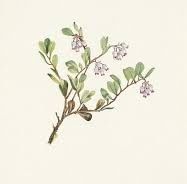 is a _____.
is a _____.- a)Shrub
- b)Herb
- c)Tree
- d)Creeper
Correct answer is option 'A'. Can you explain this answer?
 is a _____.
is a _____.a)
Shrub
b)
Herb
c)
Tree
d)
Creeper
|
|
Neha Verma answered |
Cotton plant is a shrub.
Fruits develop from:- a)Leaves
- b)Seeds
- c)Flowers
- d)Stem
Correct answer is option 'C'. Can you explain this answer?
Fruits develop from:
a)
Leaves
b)
Seeds
c)
Flowers
d)
Stem
|
|
Amit Khanna answered |
The fruits develop from the flower after fertilization.
Which part of the potato plant is used to make potato chips?- a)Seed
- b)Fruit
- c)Root
- d)Stem
Correct answer is option 'D'. Can you explain this answer?
Which part of the potato plant is used to make potato chips?
a)
Seed
b)
Fruit
c)
Root
d)
Stem
|
|
Neha Verma answered |
Edible part of potato is underground stem.
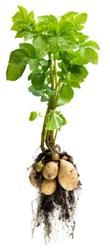

What distinguishes shrubs from trees?- a)Shrubs have a thin, delicate stem.
- b)Shrubs usually live for many years.
- c)Trees give a bushy appearance.
- d)Shrubs have a smaller size compared to trees.
Correct answer is option 'D'. Can you explain this answer?
a)
Shrubs have a thin, delicate stem.
b)
Shrubs usually live for many years.
c)
Trees give a bushy appearance.
d)
Shrubs have a smaller size compared to trees.
|
|
Stoneridge Institute answered |
Shrubs are smaller than trees and have small woody stems, giving them a bushy appearance.
What is the primary food source for animals like elephants, rhinoceros, and deer?- a)Plants
- b)Insects
- c)Other animals
- d)Fish
Correct answer is option 'A'. Can you explain this answer?
a)
Plants
b)
Insects
c)
Other animals
d)
Fish
|
|
Stoneridge Institute answered |
Animals like elephants, rhinoceros, and deer primarily eat plants for their sustenance.
Which part of plant gives out sweet fragnance to attract butterflies?- a)Flowers
- b)Leaves
- c)Fruits
- d)All of the above
Correct answer is option 'A'. Can you explain this answer?
Which part of plant gives out sweet fragnance to attract butterflies?
a)
Flowers
b)
Leaves
c)
Fruits
d)
All of the above

|
Learning Enablers answered |
Flowers give out sweet smells to attract butterflies. The fragrance helps butterflies find the flowers, so they can drink nectar. The nectar is food for butterflies.
Which part of the seed grows first when it sprouts?- a)Roots
- b)Stem
- c)Leaf
- d)Fruits
Correct answer is option 'A'. Can you explain this answer?
Which part of the seed grows first when it sprouts?
a)
Roots
b)
Stem
c)
Leaf
d)
Fruits
|
|
Neha Verma answered |
Roots grows first on sprouting.
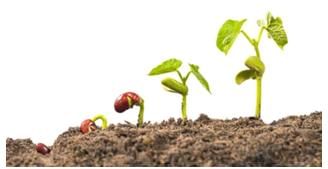

Which of the following is a common character of climbers and creepers?- a)They bear large flowers.
- b)They grow along the ground.
- c)They grow by coiling around a support.
- d)They have weak stems.
Correct answer is option 'D'. Can you explain this answer?
Which of the following is a common character of climbers and creepers?
a)
They bear large flowers.
b)
They grow along the ground.
c)
They grow by coiling around a support.
d)
They have weak stems.
|
|
Swati Sharma answered |
Both creeper and climber have weak stem.
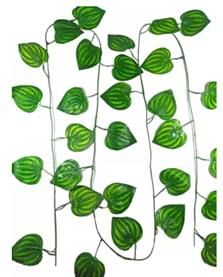

What should be done to protect wild animals and their habitats?- a)Cut down trees for human use.
- b)Kill wild animals for their body parts.
- c)Preserve forests and avoid harming wild animals.
- d)Keep wild animals as pets at home.
Correct answer is option 'C'. Can you explain this answer?
a)
Cut down trees for human use.
b)
Kill wild animals for their body parts.
c)
Preserve forests and avoid harming wild animals.
d)
Keep wild animals as pets at home.
|
|
Stoneridge Institute answered |
To protect wild animals and their habitats, it is essential to preserve forests and refrain from harming or exploiting wild animals.
Read the following statements and choose the correct options:
Statement A : Trees have stronger stem than herbs and shrubs.
Statement B: Cactus is an aquatic plant.- a)Statement A is true, statement B is false.
- b)Statement A is false, statement B is true.
- c)Both the statement are true.
- d)Both the statement are false.
Correct answer is option 'A'. Can you explain this answer?
Read the following statements and choose the correct options:
Statement A : Trees have stronger stem than herbs and shrubs.
Statement B: Cactus is an aquatic plant.
Statement A : Trees have stronger stem than herbs and shrubs.
Statement B: Cactus is an aquatic plant.
a)
Statement A is true, statement B is false.
b)
Statement A is false, statement B is true.
c)
Both the statement are true.
d)
Both the statement are false.
|
|
Amit Khanna answered |
Because trees have stronger stem than herb and shrubs, but cactus is not an auatic plant insted. It is a thorny plant present in desert areas.
Cabbage, lettuce, and spinach are some of the __________ that we eat.- a)
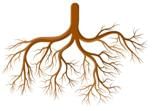
Roots - b)
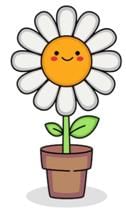
Flowers - c)
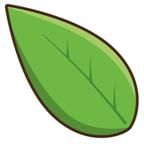
Leaves - d)
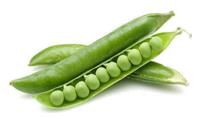
Pulses
Correct answer is option 'C'. Can you explain this answer?
Cabbage, lettuce, and spinach are some of the __________ that we eat.
a)

Roots
b)

Flowers
c)

Leaves
d)

Pulses
|
|
Rahul Desai answered |
Cabbage, lettuce, and spinach are some of the Leaves that we eat.
Where do we find wild animals like lions and tigers?- a)In the zoo
- b)In domestic environments
- c)In forests
- d)In rivers
Correct answer is option 'C'. Can you explain this answer?
a)
In the zoo
b)
In domestic environments
c)
In forests
d)
In rivers
|
|
Stoneridge Institute answered |
Wild animals like lions and tigers are found in their natural habitats, primarily in forests.
Chapter doubts & questions for Plants through the Seasons - Science & Technology for Grade 1 2025 is part of Grade 1 exam preparation. The chapters have been prepared according to the Grade 1 exam syllabus. The Chapter doubts & questions, notes, tests & MCQs are made for Grade 1 2025 Exam. Find important definitions, questions, notes, meanings, examples, exercises, MCQs and online tests here.
Chapter doubts & questions of Plants through the Seasons - Science & Technology for Grade 1 in English & Hindi are available as part of Grade 1 exam.
Download more important topics, notes, lectures and mock test series for Grade 1 Exam by signing up for free.
Science & Technology for Grade 1
11 videos|140 docs|37 tests
|

Contact Support
Our team is online on weekdays between 10 AM - 7 PM
Typical reply within 3 hours
|
Free Exam Preparation
at your Fingertips!
Access Free Study Material - Test Series, Structured Courses, Free Videos & Study Notes and Prepare for Your Exam With Ease

 Join the 10M+ students on EduRev
Join the 10M+ students on EduRev
|

|
Create your account for free
OR
Forgot Password
OR
Signup to see your scores
go up within 7 days!
Access 1000+ FREE Docs, Videos and Tests
Takes less than 10 seconds to signup

